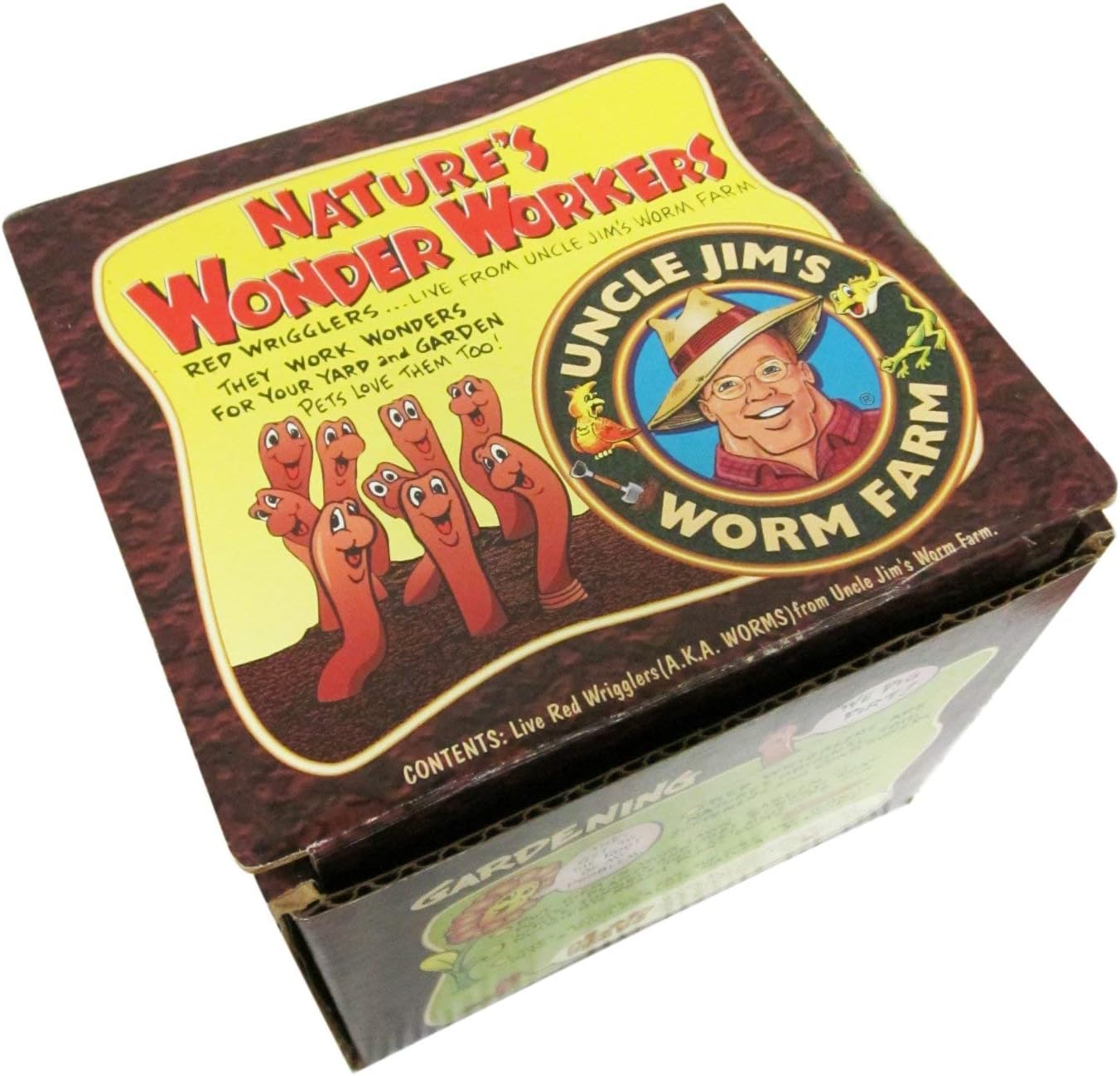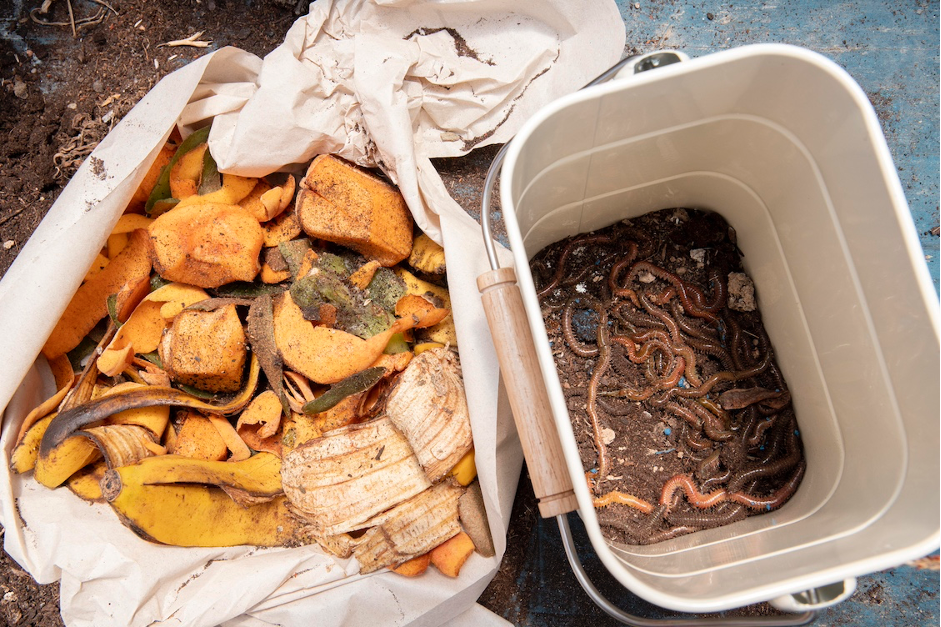I’ve been knee-deep in the world of worm farming for over four decades. You could say that, during my worm composting adventures, I’ve seen it all when it comes to these wiggly wonders. Today, I want to unravel the difference between compost worms vs earthworms. And, trust me – there’s more to it than meets the eye.
Although they may seem simple at first glance, worms are surprisingly complex and endlessly intriguing creatures. So, people often find themselves in a tangle, trying to distinguish between these two types of worms. Wondering what makes each unique? Curious about which worm is your garden’s best friend in the great composting worms vs earthworms debate?
Then keep those curious eyes scrolling because we’ll tackle all of this and more in this blog!
The Great Wormy Divide: Compost Worms vs Earthworms
If you’re into composting, you probably know that not all worms are created equal. Some are the unsung heroes of our compost piles, while others play their part in keeping our garden soil rich and fertile.
So, is there a difference between earthworms and compost worms? Yes! In the battle of compost worms vs earthworms, who reigns supreme? Let’s dig a little deeper.
Compost Worms 101
Compost worms go by many names – Red Wigglers, Red Worms, Wiggler Worms, Tiger Worms, Brandling worms, or simply Reds. As their name implies, compost worm types are the celebrities of the composting world, and for good reason. These little fellas, usually reddish-brown or purple in color, are champions at breaking down organic material in your compost pile, making them excellent worms for composting.
They’re voracious eaters, chomping down on your food scraps and turning them into nutrient-rich compost for your garden. They can devour their weight in food daily, making them perfect for recycling your kitchen scraps.
These critters also go by aliases like the Panfish worm and Trout worm, earning their reputation as the go-to choice for savvy anglers looking to reel in some panfish or trout, as they make great fishing bait for these species.
Earthworms 101
Earthworms, those common worms you see wiggling through your garden soil (hello, garden worms!), are the unsung heroes of soil health, reddish-brown in color. As their name implies, earthworms are annelid worms that burrow deep into the soil. These segmented worms are excellent diggers that work tirelessly beneath the ground, creating channels that allow air and moisture to penetrate the soil.
This improves the soil structure, making it ideal for plant growth. Think of your regular earthworms as the gardeners of the underground world. They aerate the soil and create a perfect environment for plant roots to thrive.
Now, hold on to your gardening gloves because here’s something that might surprise you: the composting worm is actually a type of Earthworm species that has cleverly evolved to thrive on decaying organic matter, such as rotting vegetation and manure!
Composting Worms vs Earthworms: Key Differences
Now that we’ve met the star players, let’s explore what sets them apart. What is the difference between Earthworms and composting worms?
It’s time to put an end to the age-old compost worms vs earthworms debate once and for all.
1. Physical Appearance
Composting worms are typically red or reddish-brown in color. Some variations, like the Eisenia fetida, can even appear reddish-purple. On the size scale, composting worms are on the smaller side, usually around 2 to 4 inches in length, depending on the type of worm. Earthworms, in contrast, are more subdued and earthy in appearance. They come in various shades of brown, which helps them blend seamlessly into their natural habitat: the soil.
Earthworms are generally larger than composting worms, from less than half an inch to often reaching 6 inches or even more in length, with some individuals seen reaching up to a remarkable, serpent-like 14 inches! They’re like the giants of the worm world, tunneling through the moist soil beneath your feet.
Although both are segmented worms, if you closely examine their tiny bodies, you’ll notice that the earthworm also lacks the distinct bands of composting worms – they have a more uniform and smoother appearance along their length.
2. Habitat and Environment
When it comes to the soil preferences of compost worms vs earthworms, each have their preferred habitats, making them the perfect match for different aspects of the organic matter cycle.
- What is the best soil for compost worms? Compost worms are social surface dwellers that prefer to live in the warm, moist surface environment of your compost bins or piles in groups.
- What is the best soil for earthworms? Earthworms are deep-burrowing worms – solitary creatures that live underground and prefer to burrow deep into cooler, wet soil to escape temperature fluctuations. They’re most at home outdoors, enjoying the lush gardens or the inviting, moist soil of your yard, which is why they’re usually not the first choice for composting.
3. Feeding Habits
Compost worms are the gourmands of the worm world, primarily feeding off food waste and other decaying organic matter, such as kitchen scraps and grass clippings, leaving behind “black gold” – nutrient-rich castings that aid solid fertilization.
The earthworm’s diet also consists of decaying plant matter (one of the rare occasions when they’ll venture up to the surface, temporarily leaving their deep subterranean homes), but also microbes and soil. Another compost worms vs earthworms feeding difference? Compost worms will chow down on it quicker!

4. Reproductive Rates
When it comes to the rate of reproduction of compost worms vs earthworms, compost worms undoubtedly win the race. They’re prolific breeders, with their reproductive machinery kicking into high gear under warm and optimal conditions. In a well-maintained compost pile teeming with nutrient-rich organic matter, these little powerhouses can multiply at an astonishing rate.
On the flip side, earthworms take a more leisurely approach to reproduction and generally reproduce at a slower rate. While they might not match the sheer numbers of their composting counterparts, they make up for it with their incredible contributions to soil health and fertility. Blame it on the composting worms’ more social tendencies!
5. Role in Composting
Probably the most notable compost worms vs earthworms difference is that compost worms are the ultimate composting sidekicks, breaking down organic matter with remarkable speed and efficiency. Earthworms improve soil quality and nutrient availability for plants by aerating it, indirectly aiding in composting.
But are earthworms used for composting soil? Not as much, because in a compost bin, they tend to be less effective as they are deep burrowers and will require you to churn and rotate the contents of your bin continuously. Red wigglers and other composting surface-dwelling all-stars naturally migrate toward the top of your bin, meaning you won’t need to intervene very often.
Compost Worms vs Earthowrms: Similarities & Shared Traits
Are compost worms the same as earthworms? No. But it’s not all about composting worms vs earthworms differences – there are some remarkable similarities that bind these earthy creatures, too.
Here’s a quick rundown of the commonalities between compost worms and earthworms. You just might be surprised at how much they share.
- Class Oligochaeta: Both species belong to this annelid worm class, sharing a common ancestry despite their diverse habitats and roles.
- Tube-Shaped and Segmented: They share the iconic tube-shaped, segmented structure that’s a hallmark of annelids, designed for efficiency and flexibility.
- Soil-Dwelling Specialists: Both call the soil their home.
- Circulatory Systems and Coelom: They both boast a closed circulatory system and possess a coelom, which doubles as a hydrostatic skeleton, providing support and aiding in movement.
- Nervous Systems: Both worm species have a central nervous system with two ganglia and a peripheral nervous system to navigate their underground world.
- Clitella: Both species exhibit clitella – unique bands that appear during the reproduction process and serve as reproduction organs.
- Hermaphrodites: Both compost worms and earthworms are hermaphrodites, possessing both male and female reproductive organs and engaging in mutual fertilization during mating rituals.
Compost Worms vs Earthworms Benefits: When to Use Each Type of Worm
So, which worm should you choose for your composting or gardening needs in the great compost worms vs earthworms debate? Where does each type of worm shine the brightest?
Here’s the lowdown:
Composting Worms: The Composting Superstars
Composting worms, without a doubt, steal the spotlight when it comes to composting. As their name suggests, their surface-dwelling nature and voracious appetite for organic matter make them perfectly suited for the composting process.
Their remarkable reproductive rates are a blessing in the world of vermicomposting, where more worms mean faster decomposition of organic matter. So, not only do they reduce your labor, but they also speed up the composting process. If you need any composting tips, check out my YouTube video, where I break it all down.
Earthworms: The Unsung Heroes of Soil Quality
Earthworms, with their deep-burrowing tendencies and knack for enhancing soil quality, are best utilized in garden and agricultural settings. These underground architects create channels in the soil, improving aeration and water infiltration while breaking down organic matter.
Their natural activities help create a healthier environment for plant roots, making earthworms invaluable for maintaining fertile and nutrient-rich garden beds. While they may not be the stars of the composting show, they shine as silent heroes, playing a crucial role in maintaining healthy soil ecosystems and promoting robust plant growth. They also make a great source of food for reptilian pets!
The Final Verdict for the Compost Worms vs Earthworms Showdown
In the battle of compost worms vs Earthworms, there’s no clear winner – it all comes down to your specific needs and the role you want these remarkable creatures to play in your gardening and composting adventures. Remember that compost worms and earthworms both have their special skills you can use to your advantage.
Composting worms, with their eye-catching colors and distinct bands, are the stars of the compost pile. Meanwhile, earthworms, with their subtle earthy tones and larger size, rule the subterranean world beneath your feet. As I like to say, worms might be small, but they sure can make a big, green difference!
At Uncle Jim’s farm, you can get your hands on lively composting worms, the ultimate allies for your composting adventures and your garden’s well-being, as well as all the supplies you need.
Any More Compost Worms vs Earthworms Dilemmas?
Let’s settle them.
Are All Worms Composting Worms?
No, not all worms are equally suitable for composting. Compost worms, such as Red Wigglers are the stars of vermicomposting due to their surface-dwelling and rapid consumption of organic material.
Can You Use Any Type of Worms for Composting?
While compost worms are the best choice for vermicomposting, common earthworms are not ideal for compost bins as they burrow deep into the soil, making them less effective for composting.
How Many Worms Do I Need for Composting?
The number of worms you need depends on the size of your compost bin or pile. A general guideline is about one pound (roughly 1,000 worms) for every square foot of composting space.
Can Earthworms and Compost Worms Live Together?
It’s best to keep earthworms and compost worms separate. Compost worms thrive in the specific conditions of a compost bin, while earthworms are better suited for enriching garden soil. Mixing them can lead to competition for resources.









